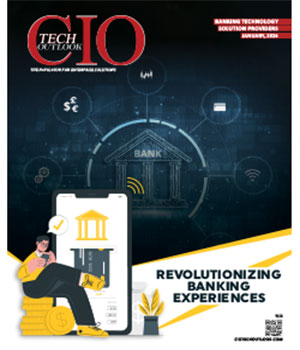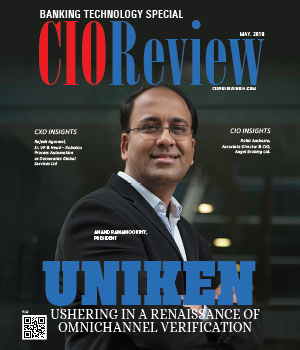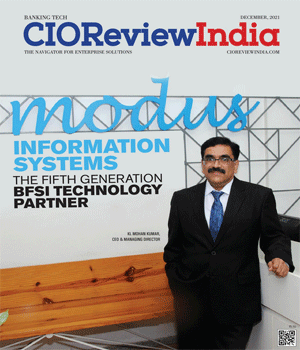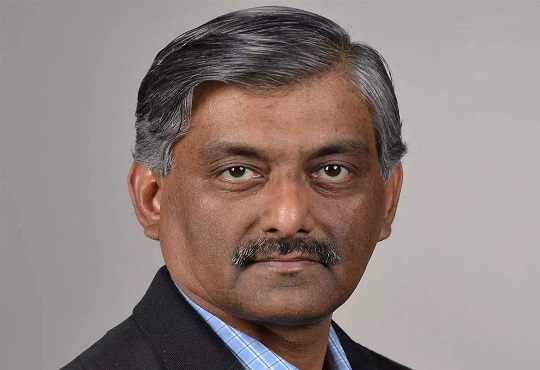
Changing trends in Payments Industry in India
Alok Jha, MD, CyberPlat India | Thursday, 15 September 2016, 12:18 IST
 With modernization of payment methods happening around us, we are surely in an era which will be remembered for the radical changes in this industry. It’s a phase where innovation and whirlwind growth of eCommerce is supporting the online payment industry in such a way that now it has become an integral part of our lives. No matter how big or small the payment is; every institution in the ecosystem has shown its dependency in the various modes of online payments. To top it, the use of mobile phones, globally, has led to an increase in the user base of e-payment subscribers. In India alone there are 150 million smartphone users today, and the number is expected to rise to 500 million over the next five years taking the online payment reach to a new level. Also, as per a recent report, India’s payment market is expected to reach Rs.817.3 crore by 2019.
With modernization of payment methods happening around us, we are surely in an era which will be remembered for the radical changes in this industry. It’s a phase where innovation and whirlwind growth of eCommerce is supporting the online payment industry in such a way that now it has become an integral part of our lives. No matter how big or small the payment is; every institution in the ecosystem has shown its dependency in the various modes of online payments. To top it, the use of mobile phones, globally, has led to an increase in the user base of e-payment subscribers. In India alone there are 150 million smartphone users today, and the number is expected to rise to 500 million over the next five years taking the online payment reach to a new level. Also, as per a recent report, India’s payment market is expected to reach Rs.817.3 crore by 2019.
It’s all about convenience
Smartphone penetration, increasing awareness about digital payments, preference for hassle-free transactions and secured payment solutions are driving growth for digital payments. Technology is driving innovations in the payment space with mobile money, e-wallets and payment aggregators. Payments have grown to include loyalty cards and prepaid instruments which further widen the scope of payments and their role today.Traditional payment systems like credit and debit cards, smart cards or other devices for making secure payments have changed so much in the recent times that almost every traditional service will soon be online and have an automated version for mass consumption.POS & card payments will change its form and format.
Mobile is the future
Mobile will become another instrument of paymentand it won’t be surprising if they get phone banking licences in the future. The increasing number ofmobile wallets and m-wallet providers are emerging as mini banking institutions. IMPS, UPI, Prepaid cards are just a few features which are changing the face of transactions in the Indian diaspora. The Unified Payments Interface (UPI) will take the power of smartphones to a new level in India, making instant money transfers an every-minute possibility. It will use interoperable OTP (one-time password) generated on one bank app and can be used across another for transaction authentication. Also, multiple level of identifiers can be used (bank account, Aadhaar number, virtual identifier, mobile number, etc) to send or receive money. Financial institutions/e-commerce/lifestyle shops are all introducing their own wallets – like the launch of SBI Buddy, ICICI Pocket and even BookmyShow’s own wallet. The value proposition of a mobile wallet will never be about the payment, but the value-added services that will be offered across a mobile-enabled environmentbecause mobile devices will be a mainstream option for person-to-person or person-to-business payments.
What to expect, soon?
Soon tap and go products will rule the market where the device and the card will be both NFC enabled to ensure payment is done on a tap and not by swipe or a chip
Crypto currencies or digital assets such as Bitcoin, Coinye, Dash and many others may soon assume the role of a financial middleman by reducing the execution timeframe of a transaction and making it more transparent and secure for the customer. Infact, many countries and companies have opened up to the idea of accepting crypto currency, the most popular being bitcoin, in place of cash or card. Big names like Microsoft, Tesla, Paypal, Dell, Gap, Subway and numerous others are transacting in Bitcoins and many are preparing to follow suit. We are also seeing block chain technology gaining momentum, attention and investments.
Authentication based payment methods or IRIS recognition will also become a necessity soon; since it is a security feature. Iris recognition is retina based authentication where the check will be done through retina and backend verification will be through Aadhaar number.We have started to see finger print authentication and banking in india. NPCI plans to introduce an iris based authentication system that will enable customers to authenticate payments without a pin or a password. Currently there are four options available to authenticate banking transactions — password or pin, fingerprint, one-time password, and a handwritten signature — all of which have higher chances of manipulation or distortion than iris-based verification. Internationally, Iris-pattern and retina-pattern authentication methods are already being employed in some bank automatic teller machines.
Amongst all products, digital assets will make its mark on the digital payment industry globally and completely change the way we transact or even think about transacting. Although the concept is still quite new, the technology will make transactions more transparent and decentralized. Cross-border payments will also become centralized, unlike the current scenario of regional bank involvements.
CIO Viewpoint
Machine Learning In Cybersecurity: The Risks &...
By Neelesh Kripalani, Chief Technology Officer, Clover Infotech
5 Major Saas Trends To Check-Out In 2021
By Vikas Bhonsle, CEO, Crayon Software Experts India
Artificial Intelligence & The Disruptive Chatbot
By Vishal Sinha, President & CIO, Tranzlease Holdings
CXO Insights
Crafting the Digital Journey in Banking
By Janifha Evangeline
Incorporating Blockchain Capabilities into...




.jpg)
.jpg)





